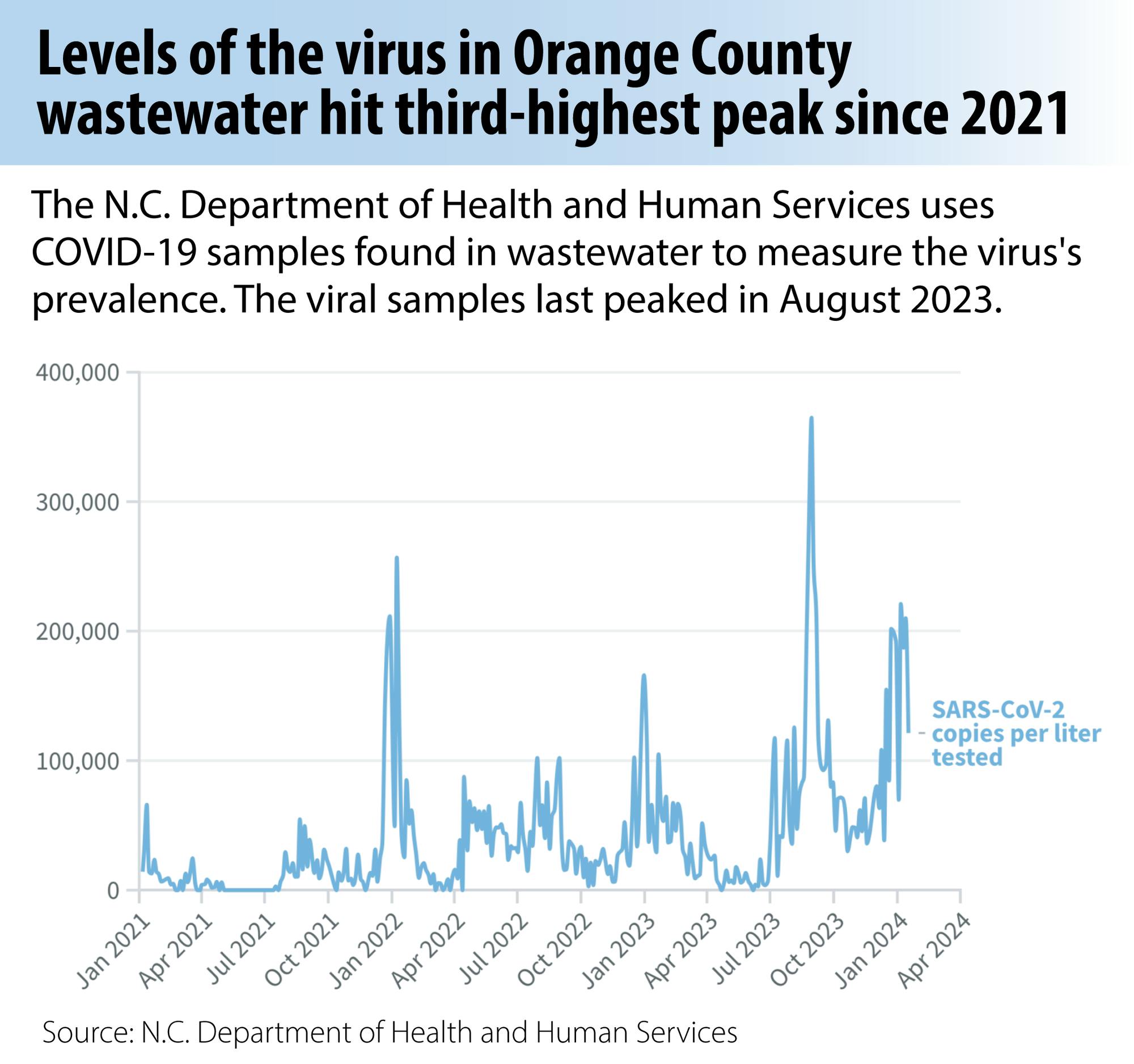The N.C. Department of Health and Human Services Wastewater Monitoring Dashboard indicated peaking levels of COVID-19 are being detected in wastewater in the Chapel Hill and Carrboro area.
Prior to the current surge, the local record for per-person levels of COVID-19 in wastewater was set at the end of August 2023 and declined soon after. Levels began rising again in November, and the area has one of the highest 15-day rates of wastewater COVID-19 detection increase in the state.
While the recorded samples are not at their highest-ever amounts, the NCDHHS' estimate on the overall levels of COVID-19 in wastewater — accounting for missing data — is at an all-time high.
People with COVID-19 and other viral illnesses shed the virus into their feces after they are infected, often before any symptoms are present. Asymptomatic people can also shed the virus into wastewater, giving medical and public health professionals a potential foreshadowing of virus outbreaks.

Virginia Guidry, the branch head for occupational and environmental epidemiology at the NCDHHS, works closely with the data on the dashboard.
“If you look statewide at the emergency department visits and hospitalizations, and then compare that with the wastewater surveillance numbers, they've all been really high," Guidry said. “The good news is, it looks like they're starting to come down some, but not so much in Chapel Hill and Carrboro. So, at the moment at least our wastewater numbers are still really high.”
Dr. Rachel Laramee, a pediatrician who completed her residency at the UNC Children's Hospital, has seen patients infected with COVID-19 on a daily basis since the start of the global pandemic, but at a reduced rate compared to 2021 and 2022.
“Since we are in the middle of epidemic flu, COVID-19 and RSV season, and people are no longer masking or isolating, COVID-19 can spread more in the population,” Laramee said. “And that's why I think you're seeing greater levels in the wastewater now, compared to the peak of the pandemic.”



